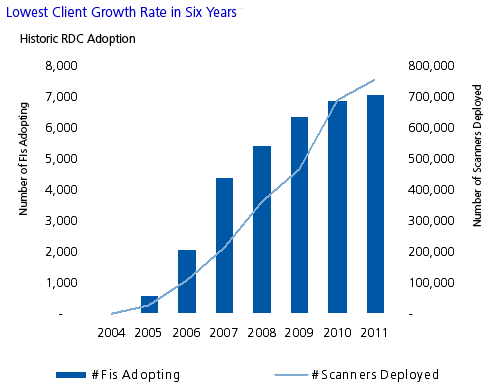State of Remote Deposit Capture 2011: Signs of a Maturing Market
Abstract
After six years of meteoric growth, commercial RDC is showing signs of a maturing market, with industrywide client base growth of just 10%.
Mobile RDC has taken center stage in the minds of financial institutions and vendors, consuming the bulk of industry activity over the past year, leaving commercial RDC feeling neglected. The result has been a modest industrywide gain of 65,000 RDC clients, or 10%, according to a new Celent report, State of Remote Deposit Capture 2011: Signs of a Maturing Market. Adoption of RDC solutions was slower still, just over 200 financial institutions in the past year (a 3% gain), which is to be expected for a market reaching maturity. Celent estimates that 75% of US banks and 50% of US financial institutions offer one or more commercial RDC solutions.

“With the low hanging fruit already picked, new client RDC sales have been more difficult,” says Bob Meara, Senior Analyst with Celent’s Banking Group and author of the report. “The business case for RDC among commercial clients has been hammered by the low interest rates that simultaneously produced a de facto price increase through sharply lower earnings credit.” A secondary factor, according to Celent, has been the buzz around mobile RDC which, although primarily viewed as a retail banking product, has consumed Treasury Management resources in many banks.

